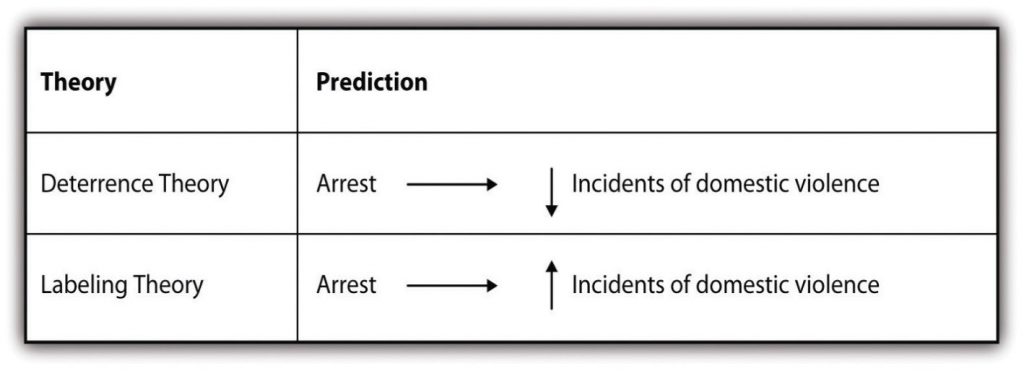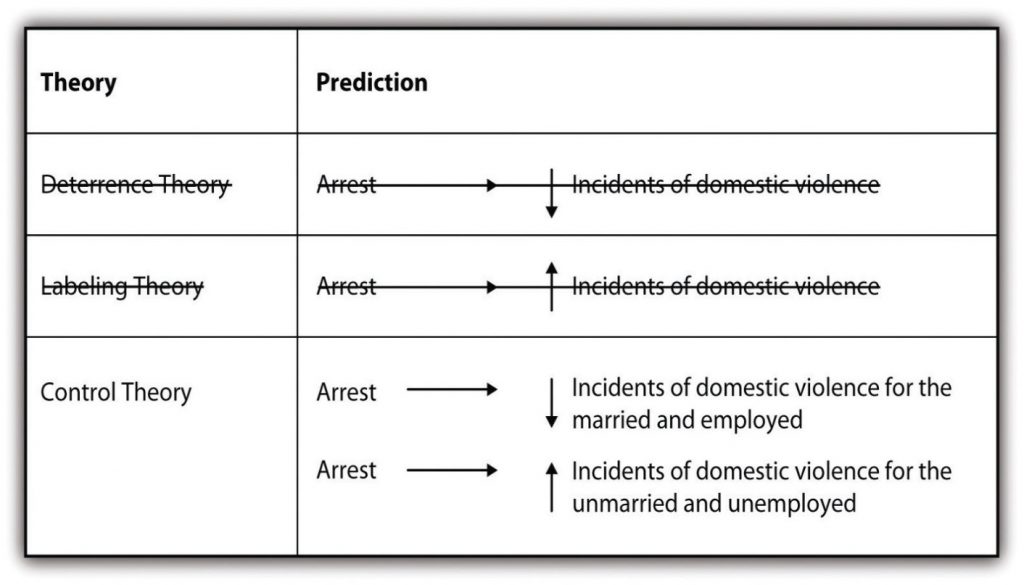2.3 Inductive and deductive reasoning
Learning Objectives
- Describe the inductive approach to research, and provide examples of inductive research
- Describe the deductive approach to research, and provide examples of deductive research
- Describe the ways that inductive and deductive approaches may be complementary
Theories structure and inform social work research. So, too, does research structure and inform theory. The reciprocal relationship between theory and research often becomes evident to students new to these topics when they consider the relationships between theory and research in inductive and deductive approaches to research. In both cases, theory is crucial. But the relationship between theory and research differs for each approach.
Inductive and deductive approaches to research are quite different, but they can also be complementary. Let’s start by looking at each one and how they differ from one another. Then we’ll move on to thinking about how they complement one another.
Inductive approaches and some examples
In an inductive approach to research, a researcher begins by collecting data that is relevant to her topic of interest. Once a substantial amount of data have been collected, the researcher will then take a breather from data collection, stepping back to get a bird’s eye view of their data. At this stage, the researcher looks for patterns in the data, working to develop a theory that could explain those patterns. Thus, when researchers take an inductive approach, they start with a set of observations and then they move from those particular experiences to a more general set of propositions about those experiences. In other words, they move from data to theory, or from the specific to the general. Figure 6.1 outlines the steps involved with an inductive approach to research.

There are many good examples of inductive research, but we’ll look at just a few here. One fascinating study in which the researchers took an inductive approach is Katherine Allen, Christine Kaestle, and Abbie Goldberg’s (2011) study of how boys and young men learn about menstruation. To understand this process, Allen and her colleagues analyzed the written narratives of 23 young men in which the men described how they learned about menstruation, what they thought of it when they first learned about it, and what they think of it now. By looking for patterns across all 23 men’s narratives, the researchers were able to develop a general theory of how boys and young men learn about this aspect of girls’ and women’s biology. They conclude that sisters play an important role in boys’ early understanding of menstruation, that menstruation makes boys feel somewhat separated from girls, and that as they enter young adulthood and form romantic relationships, young men develop more mature attitudes about menstruation. Note how this study began with the data—men’s narratives of learning about menstruation—and tried to develop a theory.
In another inductive study, Kristin Ferguson and colleagues (Ferguson, Kim, & McCoy, 2011) analyzed empirical data to better understand how best to meet the needs of young people who are homeless. The authors analyzed data from focus groups with 20 young people at a homeless shelter. From these data they developed a set of recommendations for those interested in applied interventions that serve homeless youth. The researchers also developed hypotheses for people who might wish to conduct further investigation of the topic. Though Ferguson and her colleagues did not test the hypotheses that they developed from their analysis, their study ends where most deductive investigations begin: with a theory and a hypothesis derived from that theory.
Deductive approaches and some examples
Researchers taking a deductive approach take the steps described earlier for inductive research and reverse their order. They start with a social theory that they find compelling and then test its implications with data. That is, they move from a more general level to a more specific one. A deductive approach to research is the one that people typically associate with scientific investigation. The researcher studies what others have done, reads existing theories of whatever phenomenon she is studying, and then tests hypotheses that emerge from those theories. Figure 2.2 outlines the steps involved with a deductive approach to research.

While not all researchers follow a deductive approach, as you have seen in the preceding discussion, many do, and there are a number of excellent recent examples of deductive research. We’ll take a look at a couple of those next.
In a study of United States law enforcement responses to hate crimes, Ryan King and colleagues (King, Messner, & Baller, 2009) hypothesized that law enforcement’s response would be less vigorous in areas of the country that had a stronger history of racial violence. The authors developed their hypothesis from their reading of prior research and theories on the topic. They tested the hypothesis by analyzing data on states’ lynching histories and hate crime responses. Overall, the authors found support for their hypothesis. One might associate this research with critical theory.
In another recent deductive study, Melissa Milkie and Catharine Warner (2011) studied the effects of different classroom environments on first graders’ mental health. Based on prior research and theory, Milkie and Warner hypothesized that negative classroom features, such as a lack of basic supplies and even heat, would be associated with emotional and behavioral problems in children. One might associate this research with systems theory. The researchers found support for their hypothesis, demonstrating that policymakers should probably be paying more attention to the mental health outcomes of children’s school experiences, just as they track academic outcomes (American Sociological Association, 2011).
Complementary approaches
While inductive and deductive approaches to research seem quite different, they can actually be rather complementary. In some cases, researchers will plan for their study to include multiple components, one inductive and the other deductive. In other cases, a researcher might begin a study with the plan to only conduct either inductive or deductive research, but then discovers along the way that the other approach is needed to help illuminate findings.
Researchers may not always set out to employ both approaches in their work but sometimes find that their use of one approach leads them to the other. One such example is described eloquently in Russell Schutt’s Investigating the Social World (2006). As Schutt describes, researchers Lawrence Sherman and Richard Berk (1984) conducted an experiment to test two competing theories of the effects of punishment on deterring deviance (in this case, domestic violence). Specifically, Sherman and Berk hypothesized that deterrence theory would provide a better explanation of the effects of arresting accused batterers than labeling theory. Deterrence theory predicts that arresting an accused spouse batterer will reduce future incidents of violence. Conversely, labeling theory predicts that arresting accused spouse batterers will increase future incidents. Figure 2.3 summarizes the two competing theories and the predictions that Sherman and Berk set out to test.

Sherman and Berk found, after conducting an experiment with the help of local police in one city, that arrest did in fact deter future incidents of violence, thus supporting their hypothesis that deterrence theory would better predict the effect of arrest. After conducting this research, they and other researchers did what is called replication and went on to conduct similar experiments in six additional cities (Berk, Campbell, Klap, & Western, 1992; Pate & Hamilton, 1992; Sherman & Smith, 1992). Results from these follow-up studies were mixed. In some cases, arrest deterred future incidents of violence. In other cases, it did not. This left the researchers with new data that they needed to explain. The researchers therefore took an inductive approach in an effort to make sense of their latest empirical observations. The new studies revealed that arrest seemed to have a deterrent effect for those who were married and employed, but that it led to increased offenses for those who were unmarried and unemployed. Researchers thus turned to control theory, which predicts that having some stake in conformity through the social ties provided by marriage and employment, as the better explanation.
What the Sherman and Berk research, along with the follow-up studies, shows us is that we might start with a deductive approach to research, but then, if confronted by new data that we must make sense of, we may move to an inductive approach.

Key Takeaways
- The inductive approach begins with a set of empirical observations, seeking patterns in those observations, and then theorizing about those patterns.
- The deductive approach begins with a theory, developing hypotheses from that theory, and then collecting and analyzing data to test those hypotheses.
- Inductive and deductive approaches to research can be employed together for a more complete understanding of the topic that a researcher is studying.
- Though researchers don’t always set out to use both inductive and deductive strategies in their work, they sometimes find that new questions arise in the course of an investigation that can best be answered by employing both approaches.
Glossary
- Deductive approach- study what others have done, reads existing theories of whatever phenomenon she is studying, and then tests hypotheses that emerge from those theories
- Inductive approach- start with a set of observations and then move from particular experiences to a more general set of propositions about those experiences
Image Attributions
All figures in this section are copied from Blackstone, A. (2012) Principles of sociological inquiry: Qualitative and quantitative methods. Saylor Foundation. Retrieved from: https://saylordotorg.github.io/text_principles-of-sociological-inquiry-qualitative-and-quantitative-methods/ Shared under CC-BY-NC-SA 3.0 License

